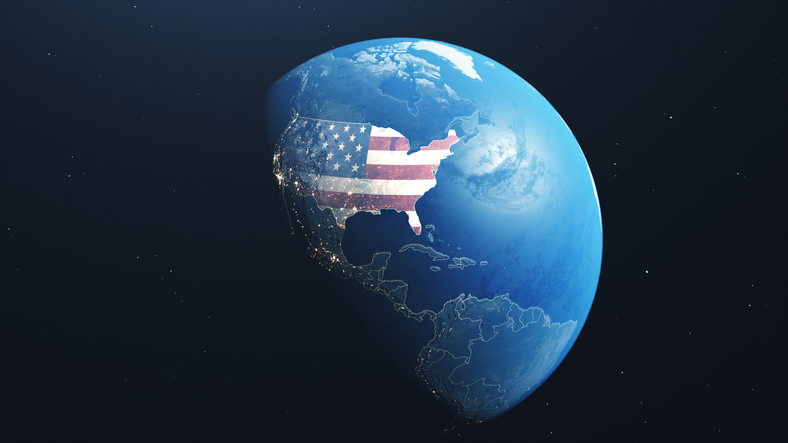Trump’s attack on science risks dismantling a century of innovation
May 18, 2025
Restrictive visa policies, rhetoric targeting academic institutions and proposed budget cuts to scientific agencies mark the start of US retreat.
American dominance in science and innovation was not inevitable. It was a deliberate, strategic achievement born of open borders, inclusive institutions and forward-looking investment in education and research. That edge, forged over a century, is eroding – quietly, but rapidly threatening the foundations of US leadership worldwide.
In today’s polarised national discourse, headlines focus on tariffs, immigration and the culture wars. But behind the noise lies a far more consequential trend: the systematic dismantling of America’s scientific and research enterprise. Unlike a stock market crash or a military misstep, this decline is less visible, but the long-term costs could be far greater.
For much of modern history, the United States was a scientific follower, not a leader. In the early 20th century, Germany reigned supreme in chemistry, physics and engineering. British universities set the global research agenda. Between 1901 and 1930, Germany received about one-third of all Nobel Prizes in science; the US garnered just 6%.
Three critical developments changed that. First, the exodus of talent from Europe in the 1930s and 1940s brought brilliance to America’s shores. Fleeing fascism and antisemitism, Jewish and other persecuted scientists — including luminaries like Albert Einstein and Leo Szilard — reinvigorated US academia and spearheaded advances from quantum physics to nuclear energy.
Though Jews comprised less than 1% of Germany’s population at the time, they earned more than 25% of its scientific Nobels – a staggering figure that illustrates the calibre of minds who fled.
Second, the devastation of World War II levelled Europe’s research infrastructure. The Soviet Union lost more than 24 million people; Britain, France and Germany lay in ruins. The US, by contrast, emerged with its economy, institutions and innovation hubs intact and ascendant.
How a shift toward Trump by tech giants like Meta could reshape Asia’s digital future
Third, and perhaps most decisive, was America’s post-war decision to treat scientific research as a national priority. The model was revolutionary: publicly funded, merit-based and driven by competition among universities. The National Science Foundation was launched in 1950, and the response to Sputnik in 1957 turbocharged this system. By the early 1960s, US research and development spending topped 2.5% of its gross domestic product – more than any other nation.
This decentralised, open ecosystem became the world’s greatest scientific engine. It gave rise to breakthroughs, from the polio vaccine to the internet, Global Positioning System, mRNA vaccines and artificial intelligence. It also fostered industries that defined the modern age – computing, aerospace, biotechnology and more.
Today, the US is dismantling the pillars that made it dominant. The Trump administration’s restrictive visa policies, rhetoric targeting academic institutions and proposed budget cuts to scientific agencies like the National Institutes of Health and NSF mark the beginning of a retreat. Although some measures have been reversed, the chilling effect lingers.
F-1 visa approvals for Chinese students are dropping amid growing caution among potential international applicants to US graduate programmes in the STEM fields of science, technology, engineering and mathematics, and a shift in interest towards peer nations.
The numbers paint a stark picture. In scientific output, as measured by the Nature Index, China leads the US in publications in top-tier journals. In patents, China filed 25.6% of all applications last year, compared to 19.7% by the US, according to the World Intellectual Property Organisation. Chinese universities have also advanced, from 34 in the top 500 of Shanghai Ranking Consultancy’s Academic Ranking of World Universities in 2010, to 103 last year, while the number of US institutions dropped from 154 to 114.
Why are more Chinese scientists leaving the US to return to China?
This is despite immigrants powering the US STEM workforce, comprising 23% of all STEM workers in 2019, and, in particular, making up 26% of the computer and maths occupations. Nearly 35% of all Nobel Prize academic winners (in chemistry, economics, medicine and physics) from the US were immigrants.
Other nations have taken note of recent developments and are acting decisively. Canada, Australia, Britain and countries across Europe are courting top researchers with fast-tracked visas, guaranteed research grants and clear paths to residency. Once a net talent exporter, China now lures its diaspora home through programs like the Thousand Talents Plan, offering state-of-the-art laboratories and generous start-up funding.
More than 75% of US scientists who answered a Nature poll said they were considering leaving, citing political uncertainty and better professional prospects abroad.
What America risks losing is not just academic prestige. It is the seedbed of future industries. From quantum computing and bioengineering to clean energy and AI, tomorrow’s breakthroughs begin in basic research today.
Trump: Chinese AI start-up DeepSeek’s strong showing a ‘wake-up call’ for US tech sector
National security is also at stake. In the Cold War era, scientific strength was strategic strength. The same is true now – except the competitors are more capable and the stakes more diffuse. The next Manhattan Project or Defence Advanced Research Projects Agency breakthrough won’t happen in a vacuum. It needs an ecosystem, and that ecosystem is fraying.
Great powers rarely fall abruptly. They decline through small but accumulating choices that reflect fear over confidence, ideology over pragmatism and complacency over ambition.
The US remains a global leader in science. But leadership is not a trophy. It is a discipline. It is earned and re-earned every year. America faces a choice. Will it double down on the elements that built its century of innovation – openness, investment and institutional strength? Or will it continue to retreat, one visa, budget cut and misguided policy at a time?
The future will judge us not for what we once led, but for what we chose to preserve.
Republished from the South China Morning Post, 14 May 2025
